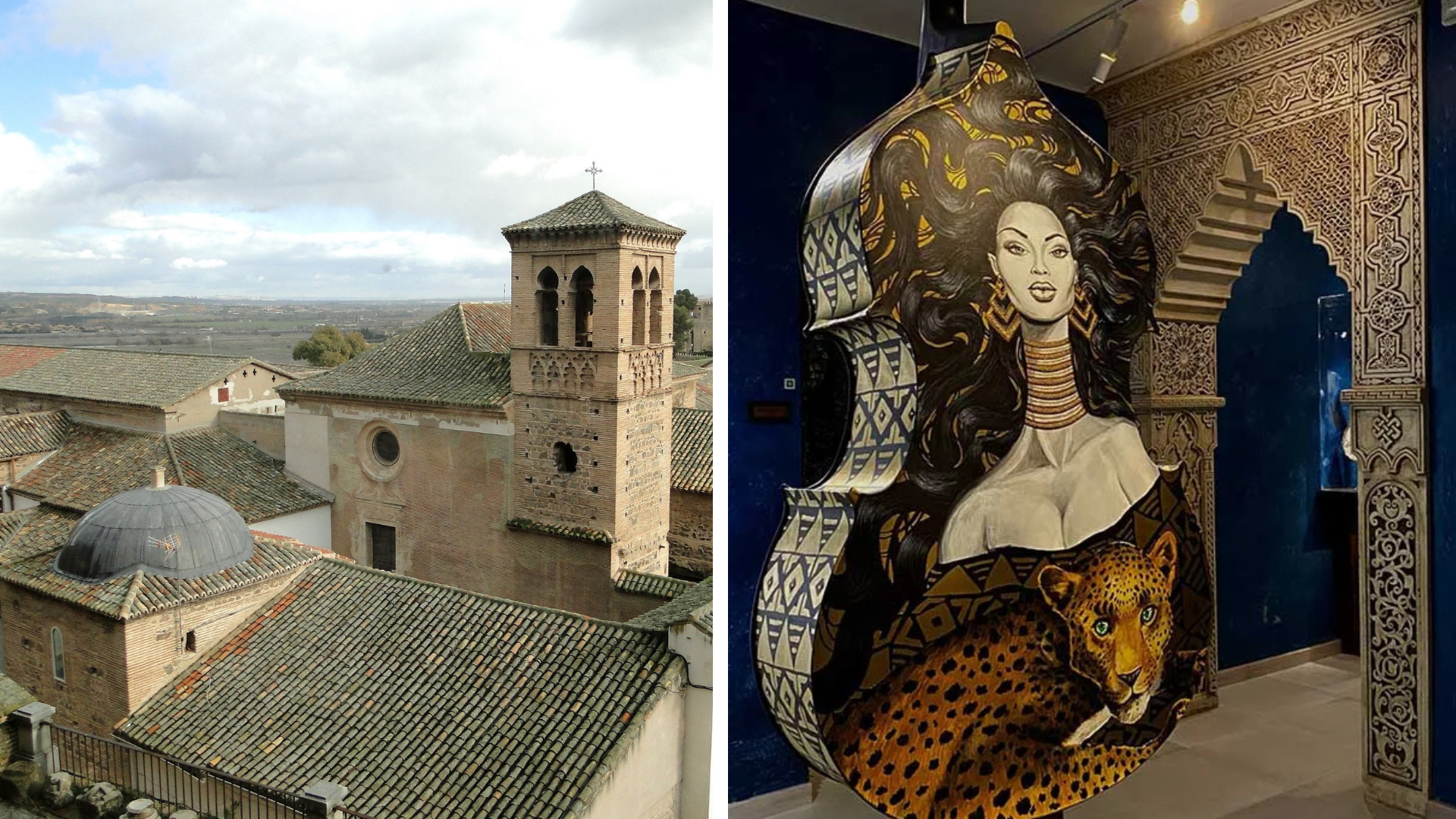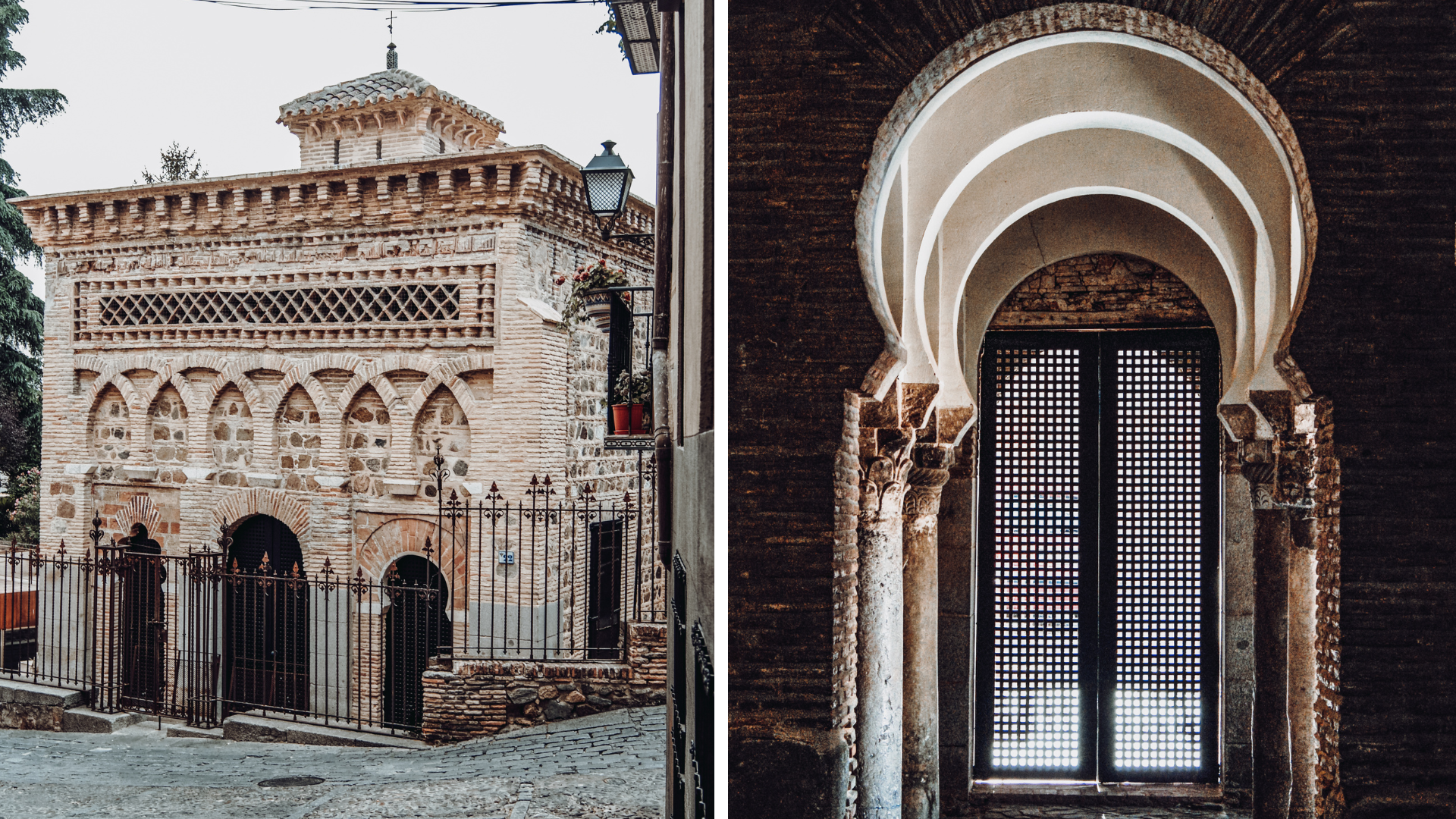Toledo: Our essential 11
Visit Toledo once, and you’ll never stop dreaming of going back. Known as the “city of three cultures”, the capital of La Mancha is a palimpsest of ages past, shaped by centuries of Jewish, Christian and Muslim influences that have left a tremendous cultural legacy. The winding streets of the Old Town, a UNESCO World Heritage Site, were first laid out in the Middle Ages and are bursting with historic landmarks. If you only have one day to explore this unforgettable city, here are the sights and experiences you won’t want to miss:

Santa María Cathedral.
A masterpiece of the Gothic style, this splendid cathedral is home to the largest church bell in Spain, and one of the largest in all of the Christian world; it measures almost three metres across and weighs in at an impressive 18 tonnes. Give yourself time to appreciate the cathedral’s spectacular chapels and admire its intricate stained glass and collection of precious artifacts. Look up, and suspended from the ceiling you’ll spot the black domes of a flock of capellos: ecclesiastical hats worn by archbishops of Toledo interred in the cathedral.
The Alcázar.
The Alcázar dates back to Roman times and occupies one of the oldest parts of the city. It bears the traces of a rich and storied past (including the War of the Spanish Succession, the Peninsular War, the Civil War and beyond), beset by raids, attacks and fires. Today, it houses the Army Museum and the Regional Library of Castilla-La Mancha.

Santo Tomé Church.
This 11th-century church contains one of El Greco’s most celebrated paintings, The Burial of the Count of Orgaz. It’s one of only a handful of Western masterworks to hang in their original settings — in this case, the funerary chapel where, according to Toledan lore, mass was said over the body of the eponymous count.
Plaza de Zocodover.
This bustling square has been Toledo’s nerve centre for much of its history. Just a few steps from the Alcázar, it takes its name from an Arabic word meaning “the market of burden beasts”. Centuries back, this was the spot where working animals were bought and sold.
Visit the Cromática Museum.
Behind the historic walls of the Monastery of the Immaculate Conception is one of the world’s most unique and intriguing museums. Museo Cromática harbours a cornucopia of collections and exhibitions focused on painting, music, history and leisure, as well as live performances and a fabulous cocktail bar. The building has been visited, or even inhabited, by a veritable who’s who of historic characters, including Abd al-Rahman III, El Cid, Charlemagne, Isabella I of Castille, Alfonso X “The Wise” and St John of the Cross.

Sample some artisanal marzipan.
This delicious sweet treat is a Toledan speciality, made from a mixture of sugar and almonds. It’s sold not only in cake shops, but also from many of the convents dotted around the city, including Comendadoras de Santiago, San Clemente, Santo Domingo el Antiguo, San Antonio de Padua and Santa Isabel de los Reyes. If you haven’t yet had the pleasure, put this one right at the top of your list. You can thank us later!
Learn about the traditional craft of damascening.
Damascene work is another Toledan tradition with its roots in the Arabic world. It’s a delicate, highly skilled technique that can be applied to all manner of objects, displayed in the Old Town’s many specialist stores. The style popularly known as “Toledo Gold” can be achieved either by hand or by machine, using 24-carat gold or silver inlaid on iron, copper or steel. The rich sheen of precious metals contrasts with the sombre tones of more workaday metals, creating a stunning visual effect.

Visit the Roman baths.
Whisk yourself back through the centuries and explore this fascinating jewel of a building sequestered beneath the streets of Toledo’s Old Town. Only part of the original structure survives to this day, but the excavated remains evoke a long-lost grandeur, with marble surfaces and an underground heating system.
Synagogue of Santa María la Blanca.
The largest synagogue in Spain is arguably also the most beautiful. At the heart of the old Jewish quarter, you’ll discover this magnificent 12th-century building, once the centre of Jewish worship in the city. An example of the Mudejar style, it features five naves divided by pillars supporting a proliferation of horseshoe arches. It’s a place of indescribable beauty that never disappoints.
Monastery of San Juan de los Reyes.
Built for Franciscan monks in the 15th century, this monastery is known for its fusion of Gothic and Mudejar architecture. More than 200 chains are displayed on its façade: the shackles of Christian prisoners freed by the Catholic Monarchs in the Reconquista of Andalusia. The curious can scour the walls of its lovely cloister for the figure of a monkey with a book, seated on a chamber pot. This irreverent detail is said to immortalise a certain monk, a little over-zealous in his supervision of the monastery's builders.
Cristo de la Luz Mosque.
No trip to Toledo is complete without a visit to its oldest building, regarded as a rare survivor of the kingdom of Al-Andalus. Originally founded as a caliph mosque, it was converted to a church in the 12th century, acquiring a Mudejar-style apse. Legend has it that a small white stone embedded in the entrance concourse marks the spot where Alfonso VI, having arrived to take Toledo from the Moors, saw his horse drop to its knees before a vision of Christ, surrounded by golden light.
